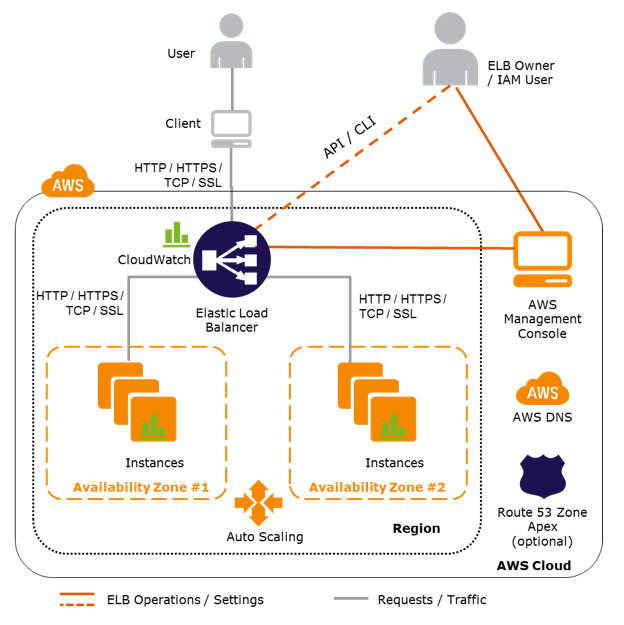
Categories
Problems that solves
Total high cost of ownership of IT infrastructure (TCO)
IT infrastructure does not meet business tasks
Non-compliant with IT security requirements
Values
Reduce Costs
Ensure Security and Business Continuity
Amazon Elastic Load Balancing (ELB)
Amazon Elastic Load Balancing - Achieve fault tolerance for any application by ensuring scalability, performance, and security.
About Product
Description
Elastic Load Balancing automatically distributes incoming application traffic across multiple targets, such as Amazon EC2 instances, containers, and IP addresses. It can handle the varying load of your application traffic in a single Availability Zone or across multiple Availability Zones. Elastic Load Balancing offers three types of load balancers that all feature the high availability, automatic scaling, and robust security necessary to make your applications fault tolerant.
Elastic Load Balancing Products
Application Load Balancer
Application Load Balancer is best suited for load balancing of HTTP and HTTPS traffic and provides advanced request routing targeted at the delivery of modern application architectures, including microservices and containers. Operating at the individual request level (Layer 7), Application Load Balancer routes traffic to targets within Amazon Virtual Private Cloud (Amazon VPC) based on the content of the request.
Network Load Balancer
Network Load Balancer is best suited for load balancing of TCP traffic where extreme performance is required. Operating at the connection level (Layer 4), Network Load Balancer routes traffic to targets within Amazon Virtual Private Cloud (Amazon VPC) and is capable of handling millions of requests per second while maintaining ultra-low latencies. Network Load Balancer is also optimized to handle sudden and volatile traffic patterns.
Classic Load Balancer
Classic Load Balancer provides basic load balancing across multiple Amazon EC2 instances and operates at both the request level and connection level. Classic Load Balancer is intended for applications that were built within the EC2-Classic network.
BENEFITS
Highly Available
Elastic Load Balancing automatically distributes incoming traffic across multiple targets – Amazon EC2 instances, containers, and IP addresses – in multiple Availability Zones and ensures only healthy targets receive traffic. Elastic Load Balancing can also load balance across a Region, routing traffic to healthy targets in different Availability Zones.
Secure
Elastic Load Balancing works with Amazon Virtual Private Cloud (VPC) to provide robust security features, including integrated certificate management and SSL decryption. Together, they give you the flexibility to centrally manage SSL settings and offload CPU intensive workloads from your applications.
Elastic
Elastic Load Balancing is capable of handling rapid changes in network traffic patterns. Additionally, deep integration with Auto Scaling ensures sufficient application capacity to meet varying levels of application load without requiring manual intervention.
Flexible
Elastic Load Balancing also allows you to use IP addresses to route requests to application targets. This offers you flexibility in how you virtualize your application targets, allowing you to host more applications on the same instance. This also enables these applications to have individual security groups and use the same network port to further simplify inter-application communication in microservices based architecture.
Robust Monitoring and Auditing
Elastic Load Balancing allows you to monitor your applications and their performance in real time with Amazon CloudWatch metrics, logging, and request tracing. This improves visibility into the behavior of your applications, uncovering issues and identifying performance bottlenecks in your application stack at the granularity of an individual request.
Hybrid Load Balancing
Elastic Load Balancing offers ability to load balance across AWS and on-premises resources using the same load balancer. This makes it easy for you to migrate, burst, or failover on-premises applications to the cloud.
Scheme of work

Competitive products
Deployments with this product
User features
Roles of Interested Employees
Chief Executive Officer
Chief Information Officer
Chief Technical Officer
Organizational Features
Internet access is available for employees
GDPR Compliance












